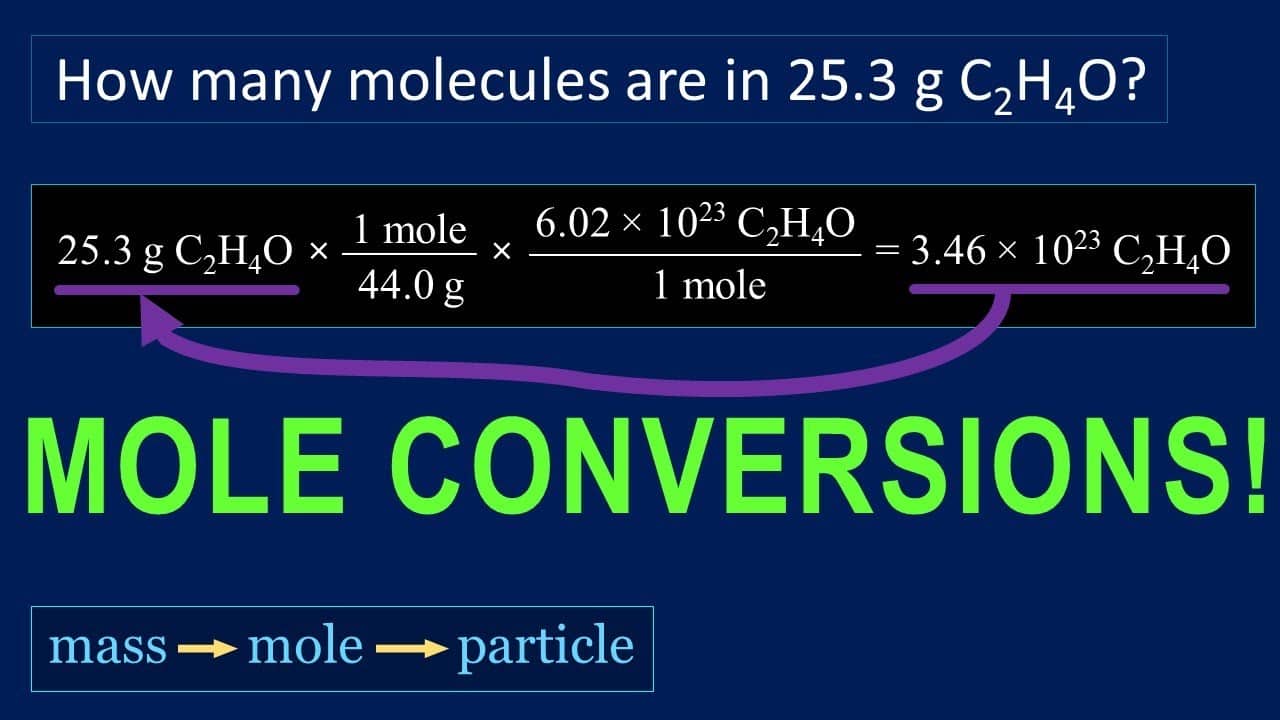Table of Contents
Mass-Mass Mole-Mole
1) If you want to produce 250. mg of aspirin (C9H8O4) from the reaction of C7H6O3 and C4H6O3, what is the minimum amount of C7H6O3 that is needed?
2C7H6O3(s) + C4H6O3(l) ![]() 2C9H8O4(s) + H2O(l)
2C9H8O4(s) + H2O(l)
(a) 2.50 x 102 g
(b) 6.21 x 103 g
(c) 1.42 x 10-1 g
(d) 1.92 x 10-1 g
(e) 1.92 x 102 g
2) 12.0 moles of iron react with 10.0 moles of oxygen to form iron(III) oxide. Which of the following statements are true?
4Fe(s) + 3O2(g) ![]() 2Fe2O3(s)
2Fe2O3(s)
(a) There will be 2.0 moles of iron left when the reaction is complete.
(b) 10.0 moles of oxygen will be consumed when the reaction is complete.
(c) There will be 12.0 moles of iron(III) oxide produced when the reaction is complete.
(d) 12.0 moles of iron react during the reaction.
(e) 9.0 moles of oxygen react during the reaction.
3) If you want to produce 2.00 kg of ethylene glycol from the reaction of C2H4Cl2 and Na2CO3, what is the minimum amount of C2H4Cl2 that is needed?
C2H4Cl2(l) + Na2CO3(s) + H2O(l) ![]() C2H6O2(l)+ 2NaCl(aq) + CO2(g)
C2H6O2(l)+ 2NaCl(aq) + CO2(g)
(a) 2.00 g
(b) 1.23 x 107 g
(c) 3.42 x 103 g
(d) 3.19 x 103 g
(e) 3.19 g
4) If you want to produce 100. mg of tungsten from the reaction of H2 and WO3, what is the minimum amount of H2 that is needed?
WO3(s) + 3H2(g) ![]() W(s) + 3H2O(l)
W(s) + 3H2O(l)
(a) 1.00 x 102 g
(b) 1.10 x 102 g
(c) 2.87 x 10-4 g
(d) 3.26 x 10-3 g
(e) 3.26 g
5) 12.0 moles of iron react with 10.0 moles of oxygen to form iron(III) oxide. Which of the following statements are true?
4Fe(s) + 3O2(g) ![]() 2Fe2O3(s)
2Fe2O3(s)
(a) 12.0 moles of Fe will be consumed when the reaction is complete.
(b) 10.0 moles of O2 will be consumed when the reaction is complete.
(c) There will be 6.0 moles of Fe2O3 produced when the reaction is complete.
(d) 10.0 moles of Fe react during the reaction.
(e) 10.0 moles of O2 react during the reaction.
6) If you want to produce 1.00 kg of silicon carbide from the reaction of SiO2 and carbon, what is the minimum amount of SiO2 that is needed?
SiO2(s) + 3C(s) ![]() SiC(s) + 2CO(g)
SiC(s) + 2CO(g)
(a) 2.40 x 106 g
(b) 9.00 x 102 g
(c) 1.50 x 103 g
(d) 1.50 g
(e) 1.00 g
7) If you want to produce 50.0 mg of deet, C12H17NO, from the reaction of C8H7OCl and C4H11N, what is the minimum amount of C8H7OCl that is needed?
C8H7OCl(l) + C4H11N(l) ![]() C12H17NO(l) + HCl(g)
C12H17NO(l) + HCl(g)
(a) 5.00 x 101 g
(b) 1.48 x 103 g
(c) 9.56 x 10-3 g
(d) 4.04 x 10-2 g
(e) 4.04 x 101 g
8) 12.0 moles of iron react with 10.0 moles of oxygen to form iron(III) oxide. Which of the following statements are true?
4Fe(s) + 3O2(g) ![]() 2Fe2O3(s)
2Fe2O3(s)
(a) There will be 0.0 moles of iron left when the reaction is complete.
(b) There will be 0.0 moles of oxygen left when the reaction is complete.
(c) There will be 6 moles of iron(III) oxide produced when the reaction is complete.
(d) 10.0 moles of iron react during the reaction.
(e) 5.0 moles of oxygen react during the reaction.
9) 10.0 moles of iron and 12.0 moles of chlorine to form iron(III) chloride. Which of the following statements are true?
2Fe(s) + 3Cl2(g) ![]() 2FeCl3(s)
2FeCl3(s)
(a) 10.0 moles of Fe will be consumed when the reaction is complete.
(b) There will be 2.0 moles of Cl2 left when the reaction is complete.
(c) There will be 12.0 moles of FeCl3 produced when the reaction is complete.
(d) 8.0 moles of Fe react during the reaction.
(e) 10.0 moles of Cl2 react during the reaction.
10) 10.0 moles of iron and 12.0 moles of chlorine to form iron(III) chloride. Which of the following statements are true?
2Fe(s) + 3Cl2(g) ![]() 2FeCl3(s)
2FeCl3(s)
(a) There will be 2.0 moles of Fe left when the reaction is complete.
(b) There will be 2.0 moles of Cl2 left when the reaction is complete.
(c) There will be 20.0 moles of FeCl3 produced when the reaction is complete.
(d) 4.0 moles of Fe react during the reaction.
(e) 4.0 moles of Cl2 react during the reaction.



















